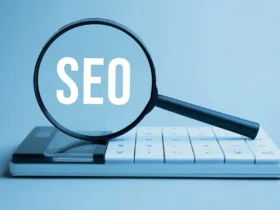These days no longer is success measured solely by the quantity of leads; the focus has shifted to capturing and nurturing leads with a genuine potential for conversion. In this article, we will examine the challenges associated with lead generation, including identifying the right target audience and capturing qualified leads.
- The Challenges of Lead Generation
- Identifying the Right Target Audience:
- Pinpointing the ideal target audience is a common challenge. Without a clear understanding of the characteristics, needs, and behaviors of the target market, lead generation efforts may cast too wide a net, resulting in an influx of unqualified leads.
- Capturing Qualified Leads:
- A significant hurdle in lead generation is capturing leads that align with your ideal customer profile. The abundance of leads doesn’t necessarily translate to a higher conversion rate if those leads lack the potential or intent to become customers.
- Strategies for Optimizing Lead Generation
- Buyer Persona Development:
- Invest time and effort in creating detailed buyer personas. Understand the demographics, pain points, and preferences of your target audience. This foundational step ensures that your lead generation efforts are aligned with the needs of potential customers.
- Utilizing Data Analytics:
- Leverage data analytics tools to analyze past lead performance. Identify patterns, preferences, and characteristics of high-converting leads. This data-driven approach empowers you to optimize your lead generation strategy based on historical successes.
- Qualifying Leads with Interactive Content:
- Implement interactive content, such as quizzes, assessments, or surveys, to engage leads and gather valuable data. Interactive content not only captures leads but also provides insights into their preferences and intent, aiding in lead qualification.
- Leveraging Targeted Marketing Initiatives
- Content Personalization:
- Tailor your content to the specific needs and interests of your target audience. Personalized content resonates more effectively with potential leads, showcasing your understanding of their unique challenges and offering solutions.
- Account-Based Marketing (ABM):
- Embrace Account-Based Marketing (ABM) to target specific companies or high-value accounts. ABM allows for personalized and focused marketing efforts, concentrating resources on leads with the highest potential for conversion.
- Implementing Geotargeting:
- Use geotargeting strategies to focus on leads in specific geographic locations. This can be particularly effective for businesses with localized offerings or those looking to expand into specific markets.
- The Role of Email Marketing in Lead Generation
- Personalized Email Campaigns:
- Email marketing plays a pivotal role in lead generation. Craft personalized email campaigns that speak directly to the pain points and interests of your target audience. Segment your email lists to ensure targeted communication and track email delivery for enhanced conversions.
- Lead Nurturing Workflows:
- Develop lead nurturing workflows within your email marketing strategy. Automated workflows guide leads through the sales funnel, providing relevant content at each stage and nurturing them toward conversion.
- A/B Testing for Optimization:
- Implement A/B testing in your email campaigns to optimize for lead engagement. Test different subject lines, content formats, and calls-to-action to understand what resonates best with your audience.
- Conclusion: Elevating Lead Generation for Lasting Success
Email marketing, as a versatile and personalized tool, remains a cornerstone in this transformation, connecting with potential customers and guiding them seamlessly through the journey from leads to loyal patrons. In the competitive arena of digital marketing, the pursuit of quality leads is not just a trend; it’s a sustainable strategy for lasting success












